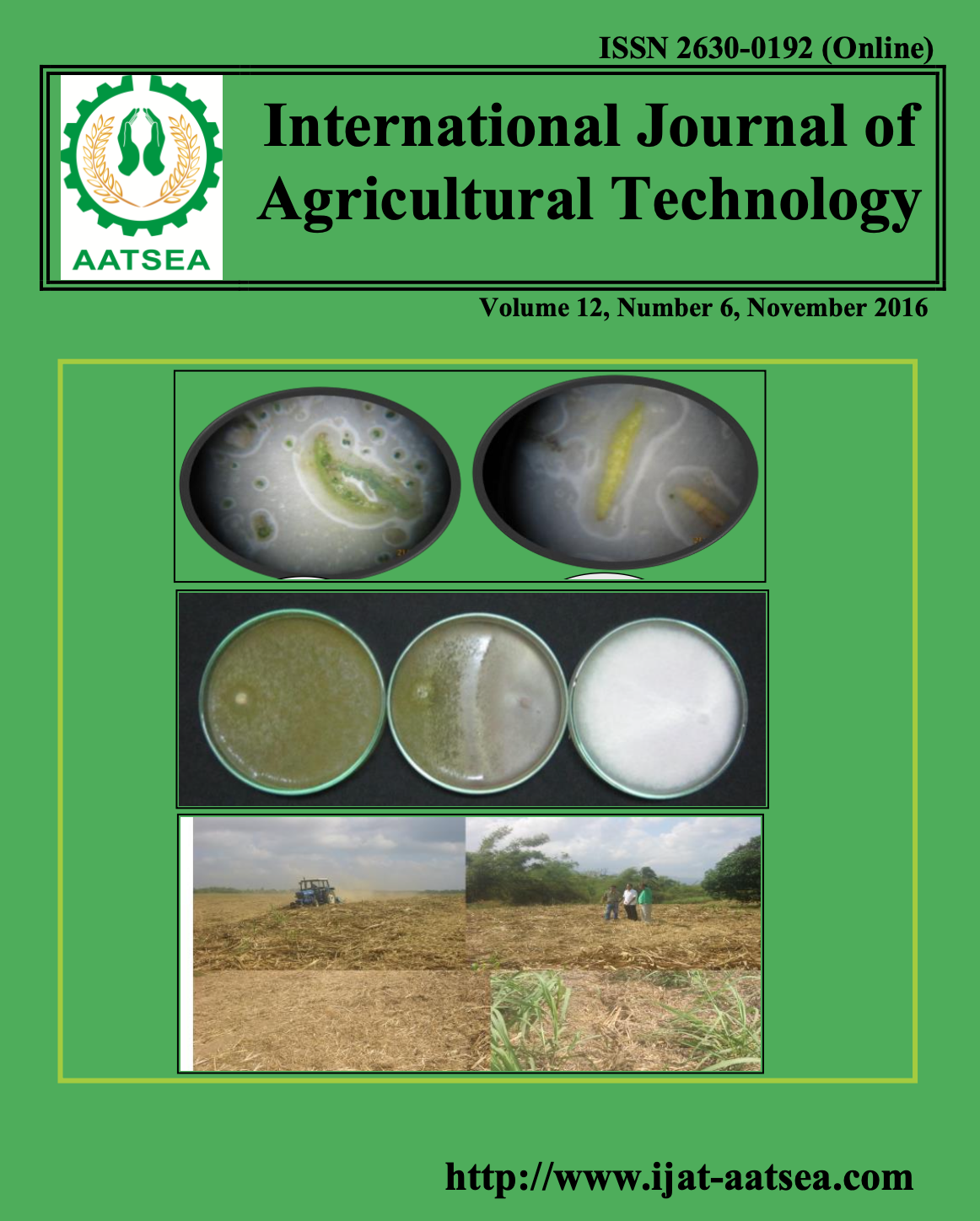Liquid smoke toxicity characteristic from raw materials variation production with different temperature and concentration level
Main Article Content
Abstract
Based on the results, it can be concluded that: a). The best liquid smoke production quality can be found in cinnamon raw materials treatment at temperature level of 400±10°C that shows mortality rate of artemiasalinaon 19.048% that is the smallest compared to the other two raw material, b) liquid smoke as the results of different raw materials treatment combination (coconutfiber, coconut shell, and cinnamon) with different pyrolysis temperature show toxic characteristic (LC50 <30 ppm) with LC values 50 respectively 14.9 ppm, 20.9 ppm and 20.5 ppm, c) liquid smoke as the results of treatment combination of raw materials (coconut fiber, coconut shell, and cinnamon) with different liquid smoke concentration show toxic characteristic (LC50 <30 ppm) with LC value 50 respectively 22.1 ppm, 19.6 ppm and 27 ppm. d) liquid smoke as the results of pyrolysis temperature treatment combination(100 ± 10°C, 200 ± 10°C, 300 ± 10°C and 400 ± 10°C) at different liquid smoke concentration show toxic characteristic (LC50 <30 ppm) with LC value50 respectively 20.5 ppm, 22 ppm, 15.9 ppm and 17.9 ppm. e) liquid smoke as the results of different raw materials treatment combinationwith different pyrolysis temperature at concentration of 0 ppm, 12.5 ppm, 100 ppm, 500 ppm respectively show toxic characteristic (LC50 <30 ppm) with LC value50 at 10.5 ppm, 11.6 ppm, 39.8 ppm, 18.6 ppm, 11.6 ppm while the concentration of 50 ppm and 1000 ppm at LC50 valuerespectively on 55 ppm and 48.4 ppm does not have toxic characteristic (LC50>30 ppm), next at the same different raw materials treatment combinationregression line with pyrolysis temperature on liquid smoke concentration of 50 ppm, 500 ppm and 1000 ppm have a weak relation to the value of probit with R2value respectively at 0.1049, 0.2141 and 0.2308. While the other concentration of 0 ppm, 12.5 ppm, 50 ppm and 100 ppm have stronger relation with the probit value as indicated by R2value respectively at 0.7159, 0.8495, 0.807 and 0.8181.
Article Details

This work is licensed under a Creative Commons Attribution-NonCommercial-NoDerivatives 4.0 International License.
References
Astuti, P., Alam, G., Mae, S. H. W., Sari, D. and Wahyuono, S. (2005). Uji sitotoksik senyawa alkaloid dari spons Petrosiasp: potensial pengembangan sebagai anti kanker. Indonesia Pharmaceutical Magazine 16:58-62.
Carballo, J. L., Hernandez-Inda, Z. L., Perez, P. and Garcia-Gravaloz, M. D. (2002). Comparison between two brine shrimp assays to detect in vitro cytotoxicity in marine natural products. BMC Biotechnology 2:1472-6570.
Finney, D. J. (1971). Probit Analysis, third edition. Cambridge University Press,Cambridge, UK. ISBN 0-521-08041-X.
Harmita, M. (2008). Buku Ajar AnalisisHayati. Book Medical Publishers EGC. Jakarta. 167 pp.
Juniarti, D. and Osmelidan,Y. (2009). KandunganSenyawa Kimia, UjiToksisitas (Brine Shrimp Lethality Test) danAntioksidan (1,1-diphenyl- 2-pikrilhydrazyl) dari Ekstrak Daun Saga (Abrus precatorius l.). MakaraSains 13:50-54.
Meyer, B. N., Ferrigni, N. R., Putnam, J. E., Jacobsen, L. B., Nichols, D. E., dan McLaughin, J. L. (1982). Brine Shrimp: A Convenient General Bioassay for Active Plant Constituent, Planta Medica 45:31-34.
Mudjiman, A. (1988). UdangRenik Air Asin (Artemiasalina). BhataraKaryaAksara, Jakarta.
Nguyen, H. H. and Widodo, S. (1999). Momordica L. Medicinal and poisinous plant research of South-East Asia 12. Pudoc Scientific Publisher. Wageningen, Netherland. pp. 353-359.
Rita, W. S., Suirta, I. W. and Sabikin, A. (2008). Isolasi and identifikasi senyawa yang berpotensi sebagai antitumor padadaging buah pare (Momordicacharantia L.). Department of Chemistry, Udayana University, Bukit Jimbaran. Journal of Chemistry Vol.2.
Sari, R. N., Utomo, B. S. B. and Widianto, T. N. (2006). rekayasa alat penghasil asap cair untuk produksi ikan asap 1. uji coba alat penghasil asap cair skala laboratorium. Jurnal Pascapanen dan Bioteknologi Kelautan dan Perikanan 1:65-74.
Scheuer, J. S. (1994). ProdukAlamiLautan. IKIP Semarang Press: Semarang.


